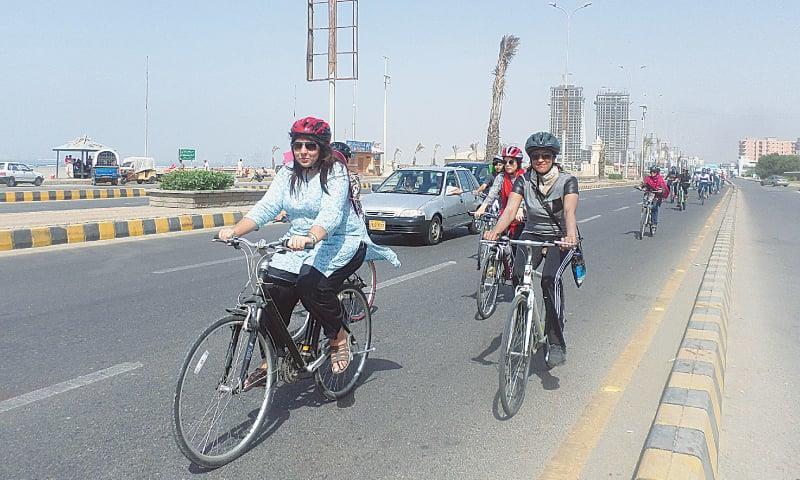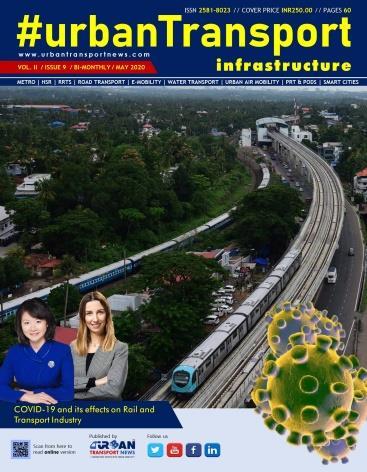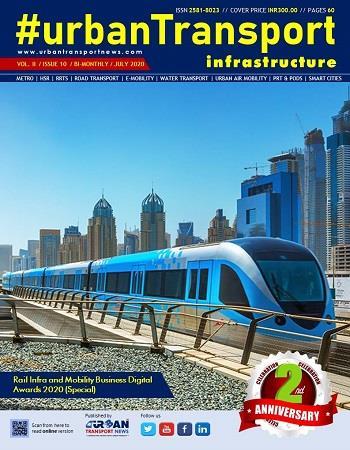
4 minute read
Cycling: A Post COVID Scenario
Cycling: A Post COVID-19 Scenario
Ar. Priyanka Kumar
Advertisement
Urban Planner
Shreya Mishra
Intern
Ar. Priyanka Kumar is working as Urban Planner at Regional Centre for Urban and Environmental Studies (RCUES), Lucknow, under the Ministry of Housing and Urban Affairs, Government ofIndia.
Ms. Shreya Mishra is working as Intern with Ar. Priyanka Kumar at Regional Centre for Urban and Environmental Studies (RCUES), Lucknow. She holds bachelor degree in Architecture (B. Arch.). Our world is facing humanity’s biggest crisis. Almost every country has been affected by the disastrous Coronavirus disease (COVID-19). Billions of people have been suffering from the impact of the global pandemic of COVID-19. The pandemic-driven crisis is constantly changing; countries are desperate to flattening the curve for COVID-19.
There are a number of possible futures, all dependent on how governments and society respond to coronavirus and it’s economic. The Covid-19 pandemic has brought new challenges for public transport also, as is evident; the country’s existing public transport infrastructure cannot meet current demand while also ensuring social distancing. Moreover, it is unrealistic to expect everybody to have access to private modes oftransport.
This is the time to develop an alternative commuting system. The capital of Colombia, Bogota, has converted 100 km of city streets into cycle lanes to reduce the load on its bus systems. Mexico is planning to quadruple its cycle network to reduce the pressure on its metro. Budapest, capital of Hungary, is creating cycle lanes as a safe alternative for the commute as the city has seen a 90% drop in public transport use. There are stories everywhere of people switching from transit trips to cycling and e-scooters, where these modes are available. India may set thousands of examples towards it.Experts recommend a social distance of at least six feet between people, as well as reducing physical contact, to minimize the spread of the coronavirus disease (Covid-19) and in public transport, it is tough to maintain. Cycling is a good way to maintain physical distancing and it is no less important to reduce traffic congestion, especially when traveling short distances. The adaptation of nonmotorized transport such as Cycling and making them more inclusive will allow people to avoid overcrowded transit modes and help maintain adequate social distancing. Cycling and walking also come with many health benefits. It does not only promote an active lifestyle but also improves mental health and strengthens the immune system if done under favourable circumstances.
In the post-pandemic scenario, passengercarrying capacity is going to be reduced by social distancing norms in public transit systems as the overcrowding of these systems will pose a further risk of disease transmission. Increasing
investment and usage of cycling for short distances will also help in managing massive economic savings. A study done by TERI states that cycling for short distances can result in an annual benefit of INR 1.8 trillion to the Indian economy, which is equivalent to 1.6% of India’s annual GDP. Also, have the potential of increasing personal fuel savings by INR 27 billion. Apart from the economic savings. Observations globally have also shown improvement in air quality and reductions in CO2 emissions due to the decrease in transport activityhighlighting just how much our daily transport and, especially, our use of private vehicles contributes to air pollution. But these are short-term gains and air pollution and emissions are expected to rise again once the situation is resolved. Only sustainable public transport or non-motorized transport including walking, cycling, and micromobility such as electronic scooters can allow for maintaining a good environment and reduce pollution. Now a days, health and immune system is a major concern. According to health experts, cycling has the capacity to burn significant amounts of calories. Doing this exercise on a daily basis will help you burn more calories, which means you'll be able to lose fat stored in your body fat, including the abdominal fat you gained during the lockdown.
It takes two to four hours a week only to achieve a general improvement to your health. As cycling is: • Low impact : it causes less strain and in juries • Good muscle workout: cycling uses all ofthe major muscle groups as you pedal • Easy to operate: unlike some other vehicles, cycling does not require high levels ofskills. • Good for strength and stamina: cycling increases stamina, strength and immune system. • Time-efficient: As a mode of transport, cycling replaces sedentary (sitting) time spent driving motor vehicles or using metros, buses or with healthy exercise.
Riding bike makes your breathing muscles work overtime to fuel your hardworking muscles. This hard work results in making your respiratory muscles a great deal stronger than they would be if you didn’t ride or exercise at all. The long-term effects of these muscles getting stronger mean your ability to extract oxygen from the air and your vital capacity both increases. This is why you feel yourself getting fitter the more and more you ride. Generally speaking, policies and investments for nonmotorised transportation have a positive benefits-cost ratio. It may lead to livelihood generation for urban poor, node-to-node connectivity, and inexpensive and comfortable services for city residents. It may also help in maintaining social distancing.
Showcase your brand with Urban Transport Infrastructure Magazine and Urban Transport Infra Business Newsletter














